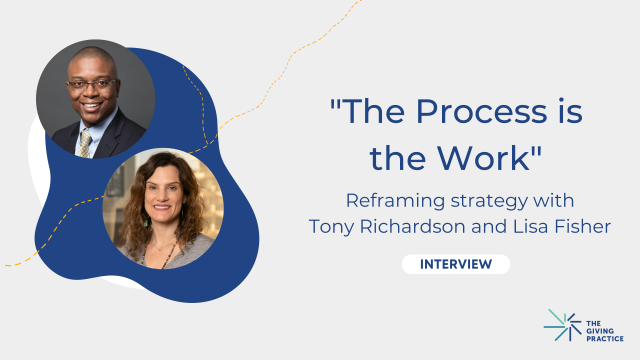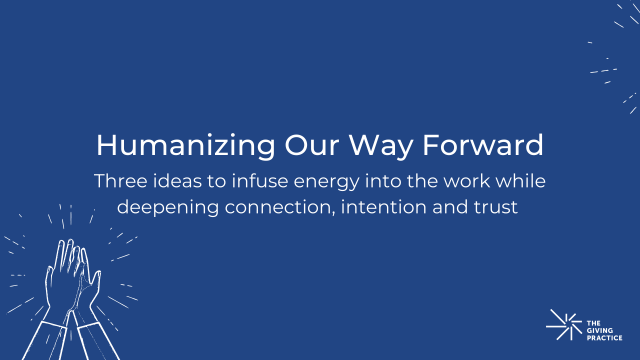
We are thrilled to share a new series that we're testing out called, "Ask TGP," where our consultants will be answering questions about topics, concepts or frameworks that are top of mind for leaders in philanthropy like you.
In this first session, Senior Advisors Abby Sarmac and Lisa Fisher talk about what it means to "sit in the muck" when facing challenges or opportunities — both individually and organizationally — and why it's important.
What ideas, topics or frameworks have you been curious to explore? What questions have been surfacing for you? Let us know below!
Session Highlights:
- What is "sitting in the muck?"
"Sitting in the Muck" is about resisting the urge to jump to action when faced with a challenge or opportunity, and instead, welcoming uncertainty, getting comfortable with being uncomfortable and embracing the messy middle — letting solutions emerge and evolve along the way.
- What does it look like?
Many times sitting in the muck looks like making space to explore hard questions as a group. Abby shares an example about a foundation addressing racial equity where sitting in the muck meant exploring what racial equity meant to each individual, what it meant to the team, what it meant for their work — and really hearing other points of view on the team.
Another way that we've helped groups better understand the idea is by referencing Otto Scharmer's Theory U which is a model of change that uses the shape of the letter "U" to help us visualize the journey of getting from point A to point B through the U — going down the U, sitting at the bottom and coming back up it.
- Why is it important?
While we may wish it were true, organizational change is not a linear or technical process. Making space to sit in the muck supports the adaptive nature of this work. It acknowledges that different people can be at different places in the change process at different times, and that solutions can evolve as new ideas emerge. By sitting in the muck, groups are not only able to develop solutions or plans together but also new ways of working with one another that support these solutions.
- How else is it helpful?
Sitting in the muck normalizes that natural discomfort that comes with change or addressing challenges and gives teams common language to talk about it. It supports shared learning and relationship building. It helps groups live into change more effectively and truly move and transform together — rather than having change come just from the top down.
Session References & Links:
- Otto Scharmer's Theory U
Curious to learn more? Reach out to us at hello@thegivingpractice.org
Let us know how we're doing!





